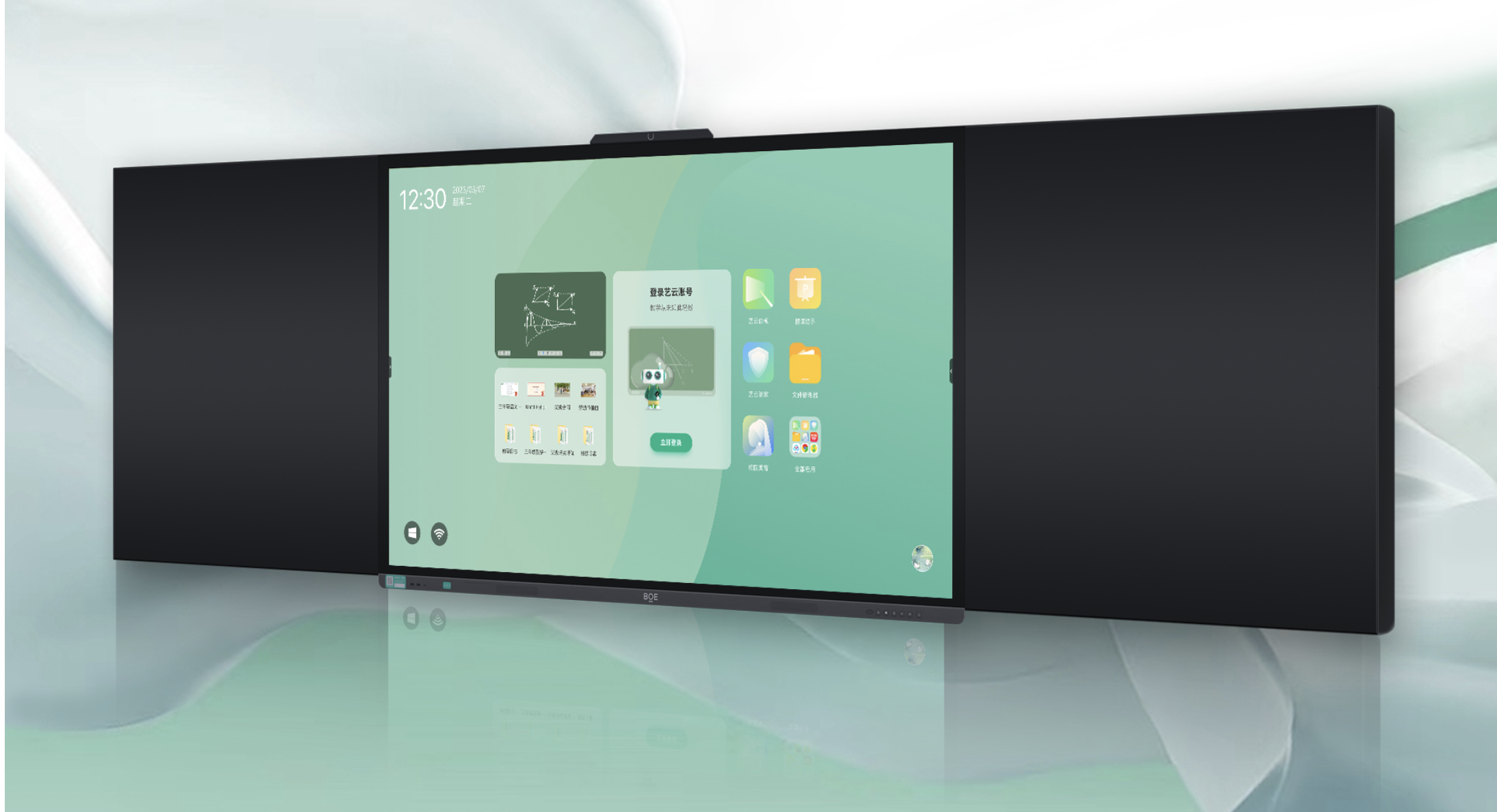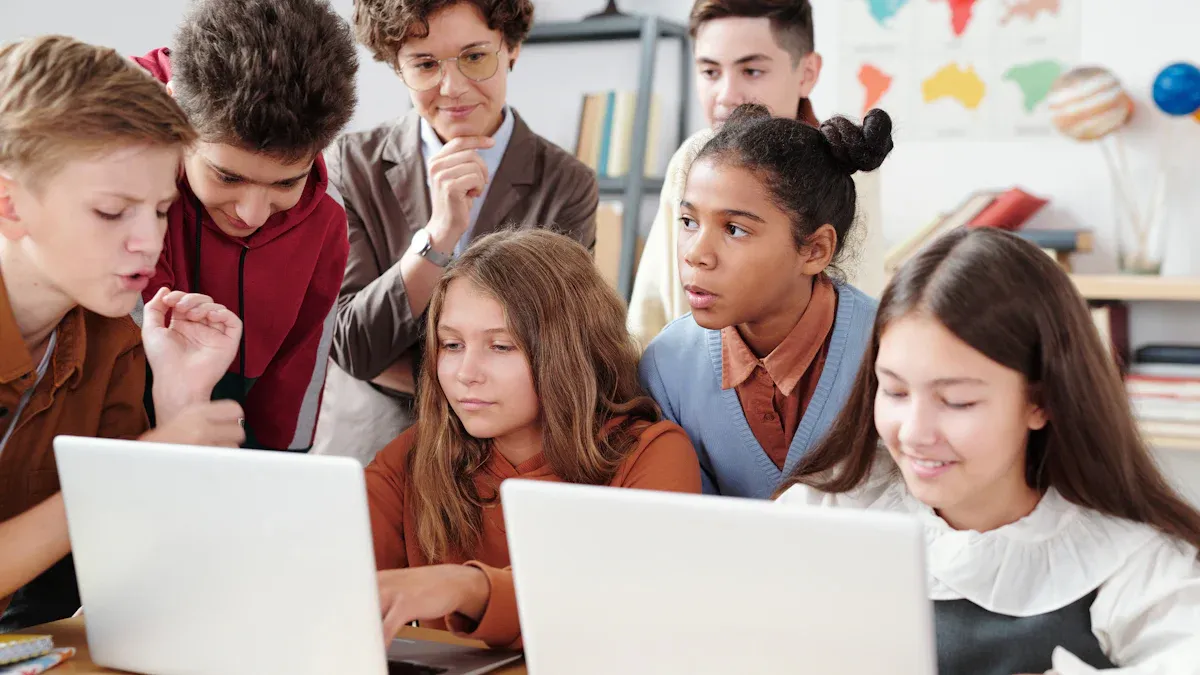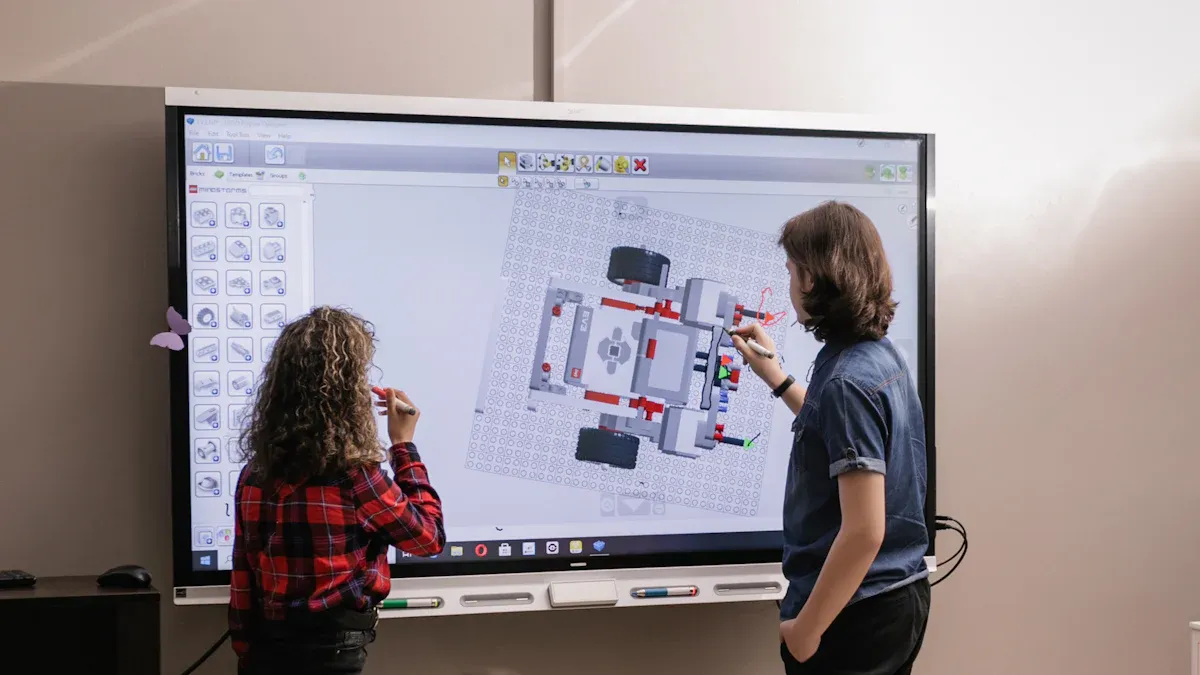Unlocking the Power of Classroom Screen for Better Learning

Classroom screen technology continues to reshape modern education by making learning more interactive and student-centered. Educators increasingly seek solutions that foster engagement and protect student well-being. Research highlights a shift from traditional lectures to electronic and interactive learning environments, supporting the demand for health-conscious classroom tools. BOE stands at the forefront of this transformation, delivering innovative classroom screen solutions that empower teachers with practical, easy-to-use resources for effective instruction.
Key Takeaways
Classroom screens boost student engagement by making lessons interactive and encouraging collaboration.
Teachers save time and manage classrooms better using smart tools like AI grading and voice commands.
Eye-care technology in screens protects students’ vision and reduces eye strain during long lessons.
BOE screens support both Android and Windows, allowing flexible use with many devices and apps.
Using classroom screens with clear plans and training helps teachers teach smoothly and keep students focused.
Classroom Screen Benefits

Enhanced Engagement
Classroom screen solutions transform the learning environment by fostering active participation and collaboration. Research on active learning classrooms shows that students feel more comfortable and socially engaged in spaces equipped with modern technology. These environments encourage behaviors such as listening, discussing, problem-solving, writing, and reading. Most students report that they stay focused and excited about attending classes with interactive screens. Teachers observe that technology-rich classrooms support higher levels of student collaboration and motivation. For example, a case study in elementary social studies demonstrated that integrating technology-based graphic organizers led to improved student writing quality and sustained engagement, especially for English Language Learners. Flexible classroom screen setups allow teachers to adapt lessons, making learning more dynamic and inclusive.
Tip: Teachers can use classroom screens to display visual aids, facilitate group activities, and encourage real-time feedback, making lessons more interactive and enjoyable for everyone.
Efficient Management
Classroom screen technology streamlines lesson delivery and administrative tasks, saving valuable time for teachers. AI-powered grading tools can reduce essay grading time from ten minutes to just thirty seconds, allowing teachers to focus on instruction and student support. Digital platforms also automate routine tasks such as attendance, content organization, and lesson planning. The following table highlights the efficiency gains reported by educators using classroom screen solutions:
Efficiency Aspect | Time Savings / Impact | Source / Study |
|---|---|---|
Administrative tasks | 3.5 hours saved per week (~126 hours annually) | Glimpse K12 (2022) |
Objective assessment grading | 40% reduction in grading time | Frontline Education (2022) |
Lesson planning and content creation | 3.2 hours saved weekly | Learning Counsel (2021) |
Reallocation of saved time | 73% of saved time used for personalized instruction | Harvard University, Kane et al. (2022) |
Data source: 7 Statistical Gains from EdTech in Modern Educational Classrooms
Teachers benefit from features such as voice command tools, which enable hands-free control of presentations and lesson materials. These tools automate repetitive tasks, making classroom operations smoother and more efficient. BOE’s classroom screen solutions further enhance efficiency with smart interactivity, NFC connectivity, and seamless integration with teaching software.
Healthier Learning
Student well-being remains a top priority in today’s digital classrooms. Increased screen time has raised concerns about eye fatigue and related health issues. Eye-care technology in classroom screens addresses these challenges by reducing harmful blue light and minimizing visual strain. BOE’s classroom screen products feature advanced eye-care displays, including paper-like modes and low blue light technology, to protect students’ vision during extended use. These innovations help create a healthier learning environment, allowing students to focus on their studies without discomfort.
Note: Schools that prioritize eye-care technology in their classroom screens demonstrate a commitment to both academic excellence and student health.
BOE Classroom Screen Features
Eye-Care Display
BOE’s classroom screen products prioritize student health with advanced eye-care display technology. The paper-like eye-care mode and hardware-level low blue light features reduce harmful blue light exposure and visual fatigue. Second-generation dynamic Gamma technology ensures vivid, true-to-life colors while maintaining a comfortable viewing experience. Light sensors automatically adjust screen brightness, protecting eyes and conserving energy. These innovations help students focus on learning without discomfort, supporting a healthier classroom environment.
Note: Schools that implement eye-care displays demonstrate a commitment to both academic achievement and student well-being.
Interactive Tools
Interactive tools on BOE classroom screens transform lessons into collaborative experiences. High-precision touch and responsive writing enable teachers and students to interact naturally with digital content. Carefully designed simulations and scaffolding guide students through complex concepts, reducing cognitive load and improving outcomes. Teachers can provide real-time feedback, which deepens understanding and engagement. Technology tools also empower students to create, think critically, and communicate effectively. These features motivate learners and allow teachers to tailor instruction to individual needs, fostering a dynamic and inclusive classroom.
Interactive simulations structure exploration and limit distractions.
Real-time feedback from teachers enhances the effectiveness of technology.
Students collaborate, create, and communicate using interactive applications.
Dual System Support
BOE classroom screens support both Android and Windows operating systems, offering unmatched flexibility. This dual system capability allows seamless switching between platforms, supporting a wide range of educational applications and workflows. Teachers can annotate presentations, insert images, save multi-page content, and share screens from various devices with a single touch. The removable OPS computer ensures stable performance and customizable configurations. Pre-installed interactive software further enhances classroom engagement and productivity.
Multi-functionality for diverse teaching scenarios.
Smooth writing and editing on interactive whiteboards.
Easy integration with mobile devices and cloud services.
NFC and Connectivity
BOE integrates NFC and advanced connectivity options to streamline classroom workflows. NFC enables secure, fast user authentication and instant access to personalized profiles and cloud storage. Wireless screen sharing supports participation from any device, encouraging whole-class collaboration. Teachers and students can quickly transition between users, reducing setup time and maximizing instructional minutes. NFC tags in educational materials provide instant access to supplementary resources, while wireless projection and multi-screen interaction foster active learning and group work.
NFC sign-in and profile access simplify classroom management.
Wireless connectivity supports collaborative teaching and learning.
NFC-enabled activities enhance interaction and resource access.
Using Classroom Screen in Class

Quick Setup
Teachers often face challenges during the initial setup of new technology. BOE addresses these issues by providing a comprehensive technology plan that aligns with instructional goals. The organization supports sustainable funding and strategic direction, ensuring that technology infrastructure meets classroom needs. Dedicated teams offer professional learning and ongoing support, helping teachers integrate devices smoothly. This approach reduces stress and allows teachers to focus on instruction rather than troubleshooting. Ongoing review processes and feedback loops ensure that technology remains effective and user-friendly.
Professional development and strategic planning help teachers overcome setup challenges, making the transition to digital classrooms seamless.
Practical Tips
Educators can maximize the effectiveness of classroom screens by adopting proven strategies:
Save and reuse digital screens to reduce preparation time.
Use keyboard shortcuts for faster navigation and tool access.
Organize digital content efficiently to streamline lesson delivery.
Employ self-grading quizzes to save time and teach technology skills.
Leverage productivity apps for planning and organization.
Utilize widgets such as timers, traffic lights, and random name pickers to manage classroom routines.
Make schedules visible to students to reinforce time management.
Combine multiple widgets to support engagement and classroom management.
Test all technology setups before class to prevent disruptions.
Provide clear instructions and expectations for students.
Tip: Balance screen use with non-digital activities to optimize learning outcomes and maintain student engagement.
Real-World Scenarios
BOE classroom screens demonstrate versatility in various educational settings:
Smart teaching stations use large touch screens for split-screen content and annotation, enhancing lesson delivery.
Interactive group learning corners allow student teams to collaborate, solve tasks, and present findings using the touch screen.
Digital exam kiosks employ the screens for assessments, surveys, and language lab activities, utilizing full touchscreen input for interactive testing.
These scenarios illustrate how classroom screens support diverse teaching methods, foster collaboration, and streamline assessment processes.
Advanced Tools and Feedback
Polls and Student Input
Modern classrooms benefit from advanced polling and student input tools. These features encourage participation, provide real-time feedback, and foster equity among students. Research demonstrates the effectiveness of these tools across diverse educational settings. The following table summarizes key findings:
Aspect | Details |
|---|---|
Participation | Studies show that over 86% of students report increased participation with digital polling tools. (Data source:https://blog.polleverywhere.com/poll-everywhere-scientifically-demonstrated-to-improve-audience-outcomes) |
Inclusion | Anonymous polls reduce inequities and encourage input from quieter students. |
Engagement | Gamified features and real-time feedback boost engagement up to 7 times over traditional methods. |
Cognitive Gains | Open-ended questions and group polling promote deeper thinking and collaboration. |
Knowledge Retention | Statistically significant gains in retention align with retrieval-based learning theory. |
Accessibility | Multi-device support ensures all students can participate, regardless of device type. |
Polling tools also allow instructors to identify struggling students early and adjust instruction accordingly. Features such as leaderboards and badges create a fun, competitive environment that motivates learners.
Resource Sharing
Teachers leverage resource sharing features to enhance lesson delivery and student engagement. These tools support collaborative planning, creative expression, and active participation. Examples include:
Students collaborate on lesson objectives, activities, and assessments using digital platforms.
Group roles ensure accountability and equal participation.
Learners contribute to grading rubrics, increasing ownership and understanding of expectations.
Student-led lessons incorporate presentations, games, and discussions, promoting autonomy.
Teachers use graphic organizers and interactive tools to stimulate inquiry and organize thinking.
Synchronous sharing features, such as idea boards, allow students to brainstorm and reflect together.
These practices foster a sense of community and empower students to take an active role in their learning.
Integration with BOE Solutions
BOE integrates advanced feedback and resource sharing tools into its educational solutions. Teachers access real-time analytics, monitor engagement, and adapt lessons on the fly. NFC and wireless connectivity streamline the sharing of resources and student input. Interactive applications support both individual and group activities, making learning more dynamic. BOE’s commitment to innovation ensures that classrooms remain flexible, inclusive, and responsive to student needs.
BOE leads the way in educational innovation by delivering solutions that enhance engagement, streamline classroom management, and protect student health. Teachers benefit from intuitive technology that supports collaboration and empowers students to take active roles in learning. Professional development and supportive communities help educators adopt new tools with confidence. For those seeking a more interactive and healthy classroom, BOE offers a proven path forward.
Discover more about BOE’s solutions or request a demo at BOE’s official website. 🚀
FAQ
What makes BOE classroom screens different from regular interactive whiteboards?
BOE classroom screens feature advanced eye-care technology, dual operating systems, and high-precision touch. These features support healthier learning and flexible teaching. Teachers benefit from seamless integration and enhanced classroom management.
Can teachers use their own devices with BOE classroom screens?
Yes. Teachers can connect laptops, tablets, or smartphones wirelessly. NFC and multiple connectivity options allow quick sharing and collaboration. This flexibility supports diverse teaching styles.
How do BOE screens help protect students’ eyesight?
BOE screens use paper-like eye-care modes and low blue light technology. These features reduce eye strain and visual fatigue. Students experience comfortable viewing, even during long lessons.
Are BOE classroom screens easy to set up and maintain?
BOE provides professional support and user-friendly interfaces. Teachers can set up devices quickly. Ongoing updates and dedicated service teams ensure smooth operation and minimal downtime.
What classroom activities work best with BOE screens?
Group projects
Interactive quizzes
Digital presentations
Real-time feedback sessions
Teachers can adapt BOE screens for many activities, making lessons more engaging and collaborative.
See Also
Essential Digital Screen Tools For Teachers In The Classroom
The Role Of LCD Screens In Improving EV Charging Experience
An Easy Overview Of BOE LTPO Display Technology Features
Effective Ways To Safeguard Your Eyes From Screen Strain
Introductory Guide To Understanding Modern Display Technologies